Tandem Skydiving: Everything You Need to Know
What is Tandem Skydiving?

Tandem skydiving is where you jump out of a plane that has reached a particular height, with a certified instructor deploying the parachute.
Unlike solo skydiving, where you are responsible for controlling every aspect of the jump and landing, an instructor guides you from start to finish during a tandem skydive. In tandem skydiving, the instructor controls the jump in its entirety -- from the different body positions and movements while skydiving, to deploying and controlling the parachute.
Tandem skydiving is generally preferred by first-time skydivers or people looking to learn how to skydive. The adventure sport is also extremely popular amongst tourists in cities like Dubai, Sydney, Melbourne.
How To Prepare For A Tandem Skydive
You can prepare for a tandem skydive by reading up on the dropzone and checking out reviews of others who have finished a tandem skydive. This is important because you need to be able to trust the skydiving center before signing any agreement or making a payment. Once you've shortlisted a skydiving center, watch videos of other skydives to get a general idea of what the experience would be like.
Tandem Skydiving Steps
Wondering how the entire process of tandem skydiving works? Don't worry, we've got you covered!
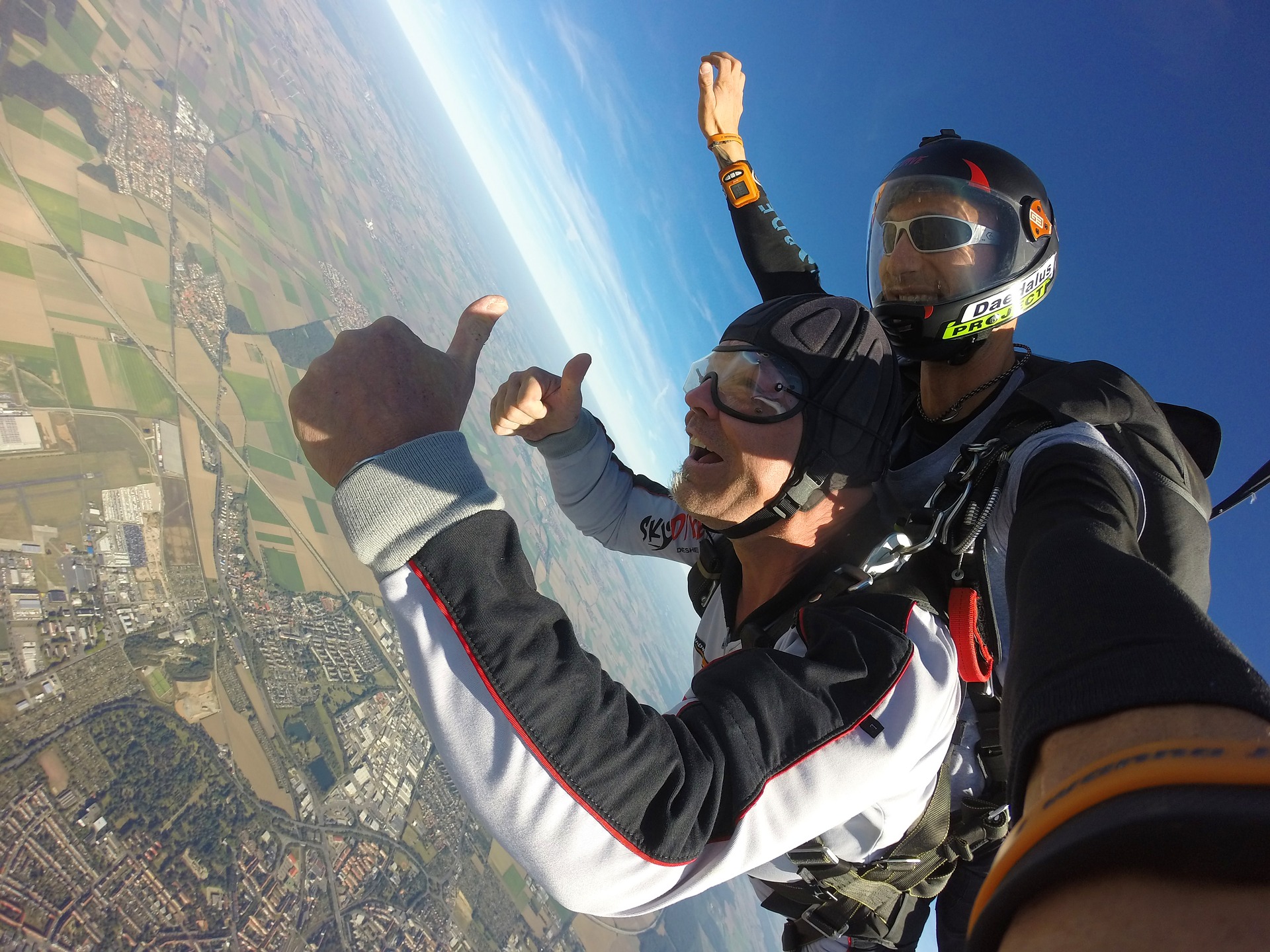
- AAD: The Automatic Activation Device automatically deploys a reserve parachute when a skydiver crosses a predetermined altitude threshold at a high speed
- Arch: This skydiving position allows divers to fall stably in a belly-to-earth position
- Canopy: In skydiving terms, a parachute is called a canopy
- Reserve Handle: This is the handle you use to deploy your reserve parachute
- Container: Another term for the parachute harness that contains the primary parachute, reserve parachute and the AAD
- Toggles: These are brakes attached to the steering line of the parachute and are used to steer the parachute
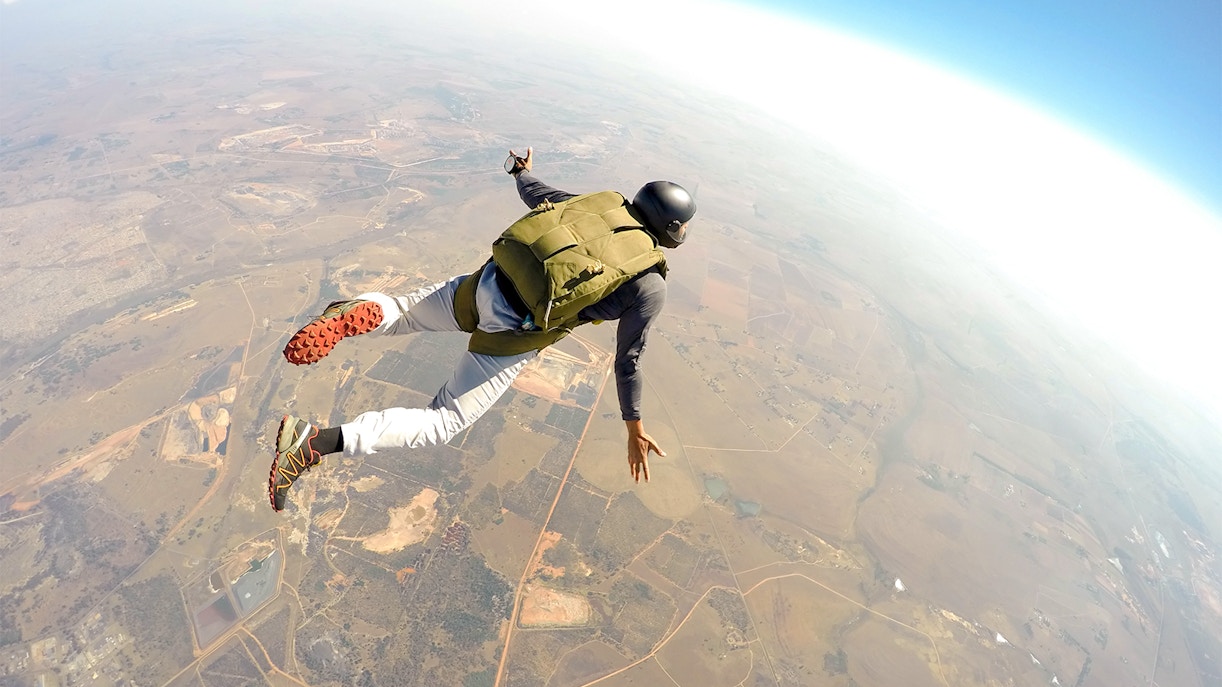
Training for a tandem skydive takes between 20-30 minutes. It includes training sessions on how to exit the aircraft, maneuvers to employ while in freefall, how to deploy the main canopy yourself and more.
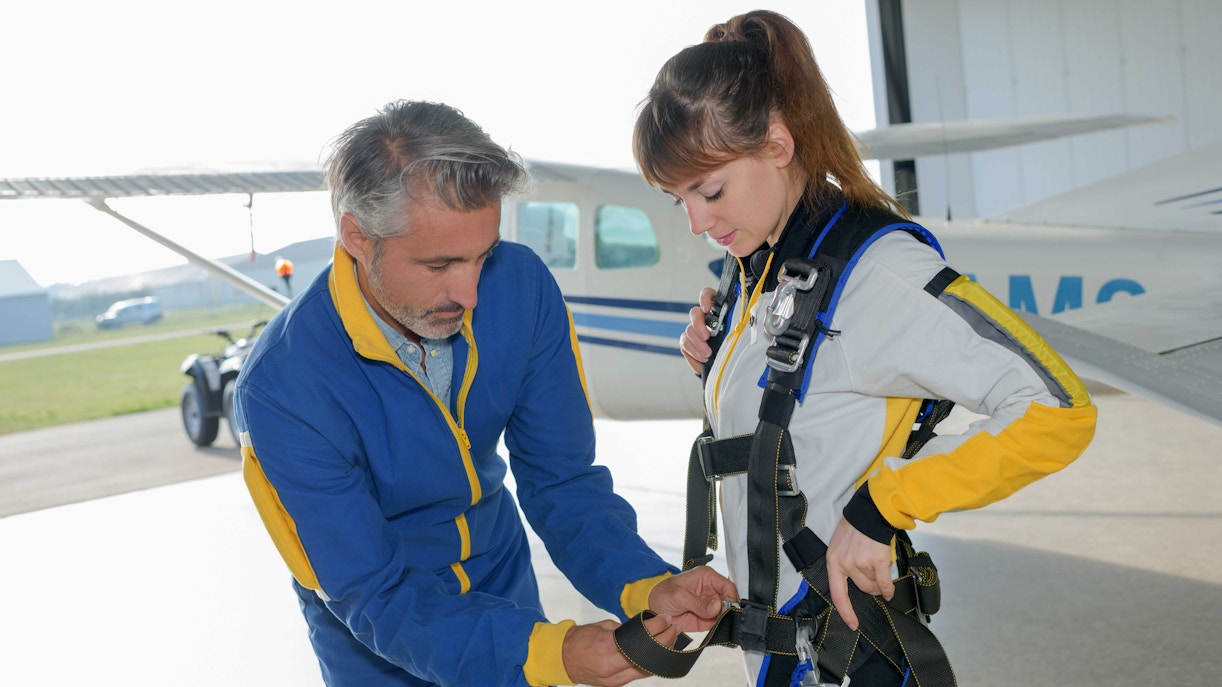
It's imperative that you get to know and trust your skydiving instructor before making the jump. This involves verifying their certification and license. A certified instructor should have a Class D license and must have completed at least 500 jumps. Once you're convinced of your instructor’s legitimacy, get to know them! The more comfortable you are with your instructor, the better your tandem skydiving experience will be.
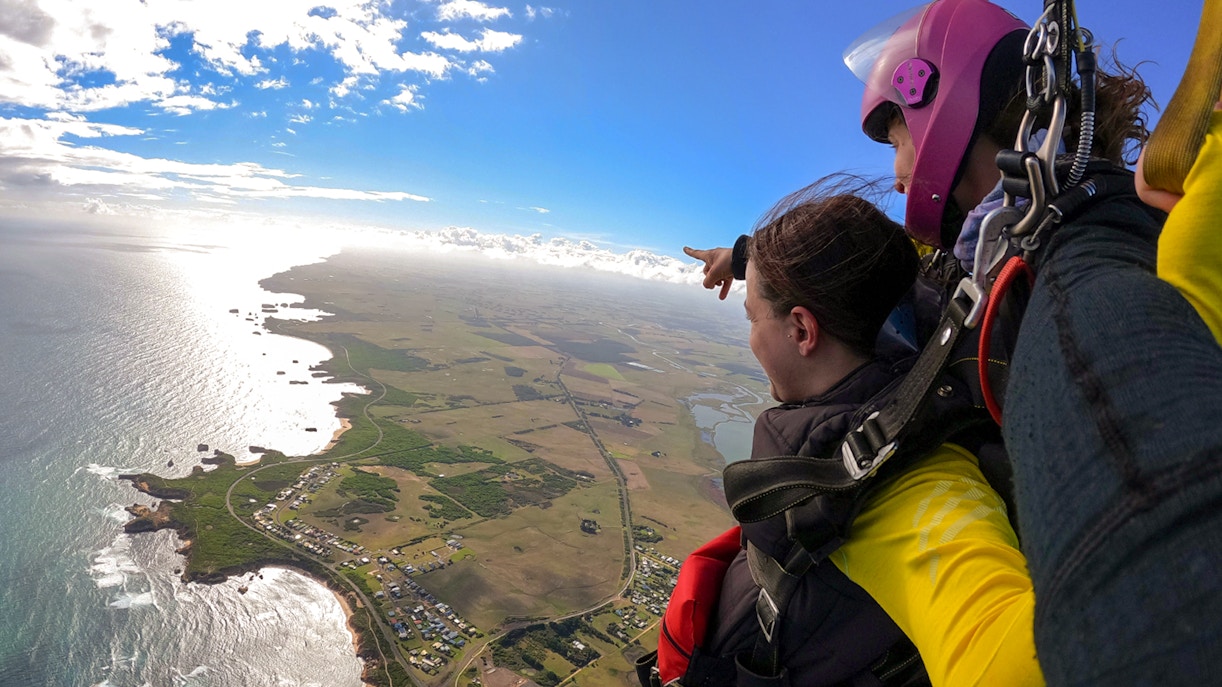
The few moments before your tandem skydive will be nerve-wrecking. There will be a million thoughts darting through your mind which could lead to panic. To avoid this, focus on the positives of the experience. Talk to your instructor and get assurance from them about the safety of the process. If you're feeling uneasy, have some water and take slow, deep breaths in frequent intervals. Close your eyes and think about the euphoric feeling of flying like a bird that awaits you.
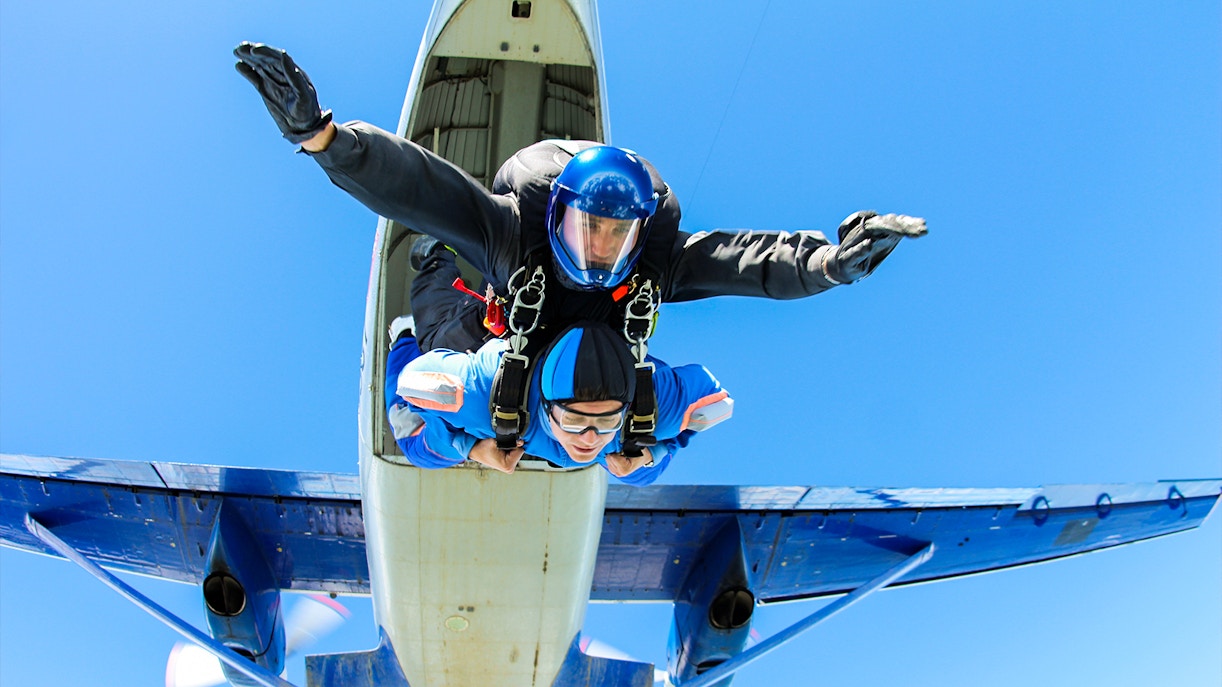
Once you jump out with your instructor, you'll experience a momentary sensory overload -- this is because your mind and muscles will work overtime to adjust to the sudden pressure on your body. This will be followed by moments of absolute peace as you fall through air at a speed of more than 120 mph. The freefall part of your tandem skydive will last between 45 to 60 seconds -- so make sure you make the most of it. At this point, the instructor will release the parachute and your speed will slow down considerably. The instructor will maneuver the parachute as per the wind and after 4 to 6 minutes of gliding, you'll finally reach the ground.



